The eCommerce landscape has witnessed tremendous growth in recent years, with marketplaces such as Amazon, Walmart, and Target becoming prominent sales channels for millions of brands worldwide. With these platforms continuing to reshape the way consumers shop, businesses must adopt effective strategies that allow them to thrive in these dynamic, competitive environments. As a leading US-based advertising agency specializing in comprehensive marketing solutions, we understand both the challenges and opportunities presented by eCommerce marketplaces and are well-equipped to help you unlock success in this ever-evolving domain.
In this blog post, we will dive into the critical aspects of eCommerce marketplace strategies, guiding you through the various steps and considerations necessary to optimize your brand's presence and maximize sales on Amazon, Walmart, Target, and other similar platforms. From understanding the unique characteristics of each marketplace to making informed decisions about product listings, inventory management, and advertising, we will provide actionable insights to help you navigate this complex landscape and drive significant growth for your brand.
To begin with, it's crucial to recognize that each eCommerce marketplace has its own set of rules, requirements, and audience demographics. Therefore, it is essential to familiarize yourself with the specific attributes of the platforms on which you plan to sell. This not only entails understanding the basic functional aspects, such as listing requirements and fees, but also requires a deeper exploration of the platform's user base, competitive landscape, and best practices employed by successful brands in your category. We do this with every Kinetic319 via our M.O.V.E. media approach.
Moreover, as the digital retail space becomes increasingly crowded, it is critical to identify unique selling propositions (USPs) that set your brand apart from the competition. This necessitates the development of a comprehensive marketing strategy, encompassing various aspects such as product positioning, branding, and promotion, to resonate with your target audience and foster sustained growth.
Understanding the eCommerce Marketplace Landscape
To excel in the competitive world of eCommerce, it's crucial first to comprehend each marketplace's unique characteristics. Amazon, Walmart, and Target all have specific features that set them apart, from fees and policies to audience demographics and shopping behaviors. By analyzing these nuances, you can craft tailored strategies that enhance your visibility and cater to each platform's user base.
Some aspects to consider when evaluating different marketplaces include:
- Listing requirements and fees
- Algorithmic factors that influence product visibility
- Purchase triggers and consumer behavior patterns
- Competitive landscape and category saturation
Creating an Optimized Product Listing
An essential part of your eCommerce marketplace strategy is ensuring your product listings are optimized for maximum visibility and conversion. This involves refining various elements, including product titles, descriptions, images, and keywords, to attract your target audience and compel them to make a purchase.
Follow these best practices for creating compelling product listings:
- Craft informative and attention-grabbing titles that incorporate relevant keywords.
- Write detailed, engaging product descriptions that highlight your product's unique selling points.
- Utilize high-quality images and videos to showcase your product.
- Conduct keyword research to identify relevant search terms that consumers use to find products like yours.
Implementing a Winning Advertising and Promotion Strategy
With millions of sellers competing for shoppers' attention, advertising and promotion are critical components of a successful eCommerce marketplace strategy. By leveraging various ad formats and promotional tools available on platforms such as Amazon, Walmart, and Target, you can increase your brand's visibility and attract potential buyers.
Some effective advertising and promotional tactics to consider are:
- Sponsored Products and Sponsored Brands campaigns to gain prominent placements in search results.
- Utilize platform-specific deals or promotions, such as Amazon's Lightning Deals, to stimulate consumer interest.
- Implement retargeting campaigns to capture interested shoppers who have viewed or interacted with your products previously.
- Leverage influencer partnerships and social media marketing to drive awareness and generate buzz around your products.
Inventory Management and Fulfillment Optimization
Proper inventory management is crucial in ensuring a smooth eCommerce marketplace journey for both you and your customers. Adequate stock levels help maintain a positive seller reputation, avoid order cancellations, and secure better rankings on platforms like Amazon, Walmart, and Target.
Key factors to consider for efficient inventory management include:
- Accurate sales forecasting to predict and prepare for future demand.
- Aligning inventory levels with promotional strategies to avoid stockouts or overstock.
- Choosing the right fulfillment method, such as Fulfillment by Amazon (FBA), to optimize shipping times and returns management.
- Regularly analyzing inventory data to detect patterns and identify areas for improvement.
Monitoring Performance and Adapting Your Strategy
Finally, the key to mastering eCommerce marketplace strategies lies in continually monitoring your performance and refining your approach accordingly. By tracking essential KPIs (like we do with KiQ), such as sales, ad performance, and conversion rates, you can identify trends, uncover opportunities, and make data-driven decisions.
To ensure your eCommerce marketplace strategy's success, consider the following actions:
- Leverage platform-specific analytics tools, like Amazon's Seller Central analytics and Walmart's Retail Analytics, to gain valuable insights.
- Keep a pulse on industry trends and evolving consumer behavior to adapt and innovate.
- Continuously test and optimize advertising campaigns for maximum return on investment (ROI).
- Welcome feedback from customers and address any issues promptly to improve customer satisfaction.
Conclusion
Mastering eCommerce marketplace strategies for platforms like Amazon, Walmart, and Target involves understanding each platform's unique attributes, creating optimized product listings, implementing effective advertising and promotional tactics, managing inventory efficiently, and continuously monitoring and adapting your approach based on performance. By following these guidelines, you can unlock your brand's potential in the world of online retail and excel in these highly competitive marketplaces.
Are you eager to optimize your eCommerce presence and achieve lasting success in the realm of online retail? Contact the expert Kinetic319 team today, and together, we will craft a winning eCommerce marketplace strategy tailored to your brand's unique needs and goals.

